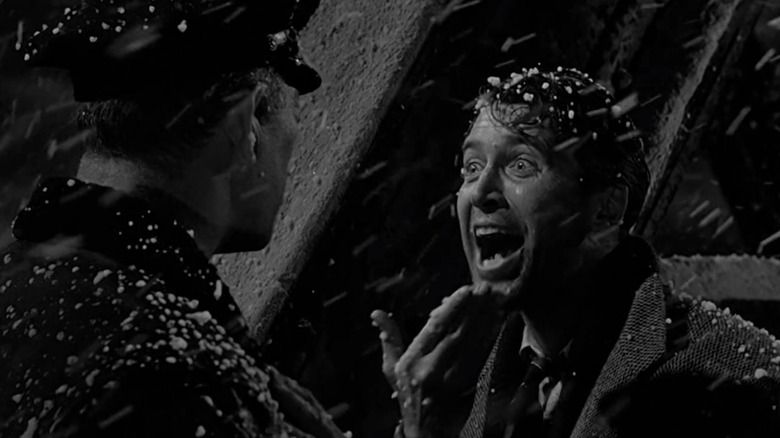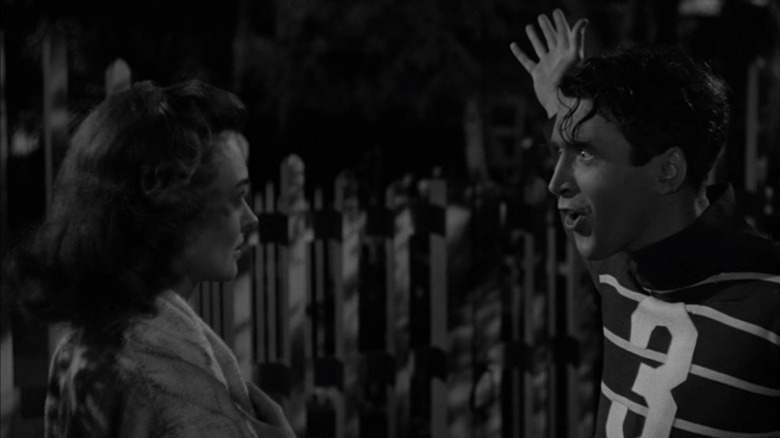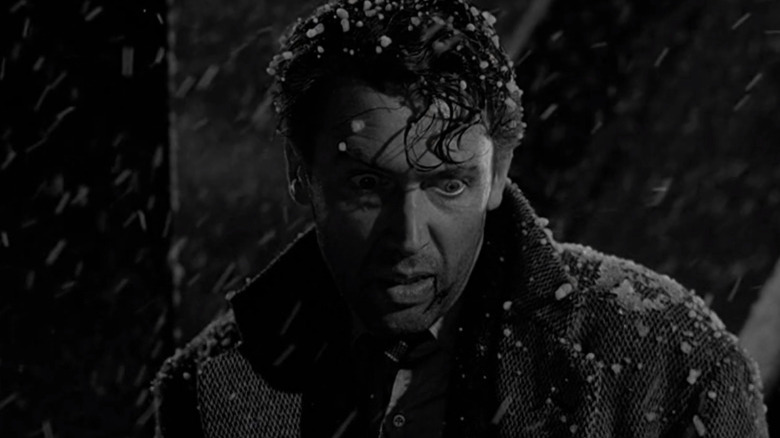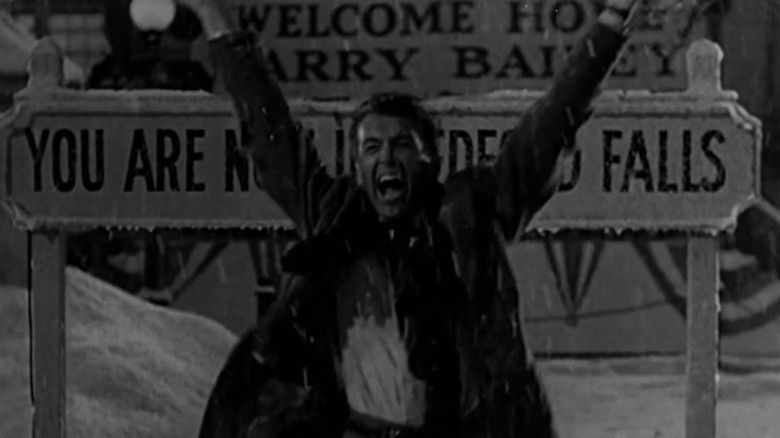Frank Capra's Vision For It's A Wonderful Life Called For A New Kind Of On-Screen Snow
There are lots of things that people take for granted, and one of them is snow. Because snow is a miracle. Maybe not the old-fashioned cold stuff that floats down every year when it gets too chilly. A great many of us have had to shovel a frozen walkway and chip away at the ice on our windshields, so we could be forgiven for not being sentimental about that.
But motion picture snow. Oh wow, that's the good stuff.
The thing about motion picture snow is, it was a real pain in the butt to invent it. It's not like real snow was in abundance in the golden age of cinema, when films were largely shot on soundstages in Hollywood, California. So for decades ,when filmmakers needed to shoot a snowy scene, they used bleached cornflakes, which were so crunchy, they made it difficult to record sound. They were also so corny, they actually attracted deer to the set.
Believe it or not, it took over fifty years of cinema history to come up with a decent solution to making snow not only look good, but making it practical to utilize on a film set.
The first film to solve the puzzle was Frank Capra's timeless masterpiece, "It's a Wonderful Life."
Mr. Capra goes to Hollywood
By the late 1940s, Frank Capra had established himself as one of the most successful and celebrated filmmakers in Hollywood. His wry sense of humor and earnest, emotional stories generated one hit after another and earned Capra two Academy Awards, for directing "Mr. Deeds Goes to Town" and "It Happened One Night," the latter of which also won Oscars for Best Picture, Actor, Actress, and Screenplay. (It was the first of only three films to win the "top five" honors, followed only by "One Flew Over the Cuckoo's Nest" and "The Silence of the Lambs.")
Frank Capra's sentimental storytelling style, affirming positive values and celebrating underdogs, became so distinctive that the term "Capraesque" is now in the dictionary. But ironically, the film now celebrated as one of Capra's best and most enduring classics was not a huge hit when it first came out.
"It's a Wonderful Life" stars James Stewart as George Bailey, a small town man who repeatedly gives up on his personal dreams to help others. After a lifetime of hardship, Bailey is at the end of his rope and about to jump off a bridge and end his own life. That's when his guardian angel arrives and shows George Bailey just how much worse the world would have been without him, proving to a desperate man that, without even realizing it, he actually has had a "wonderful life."
The movie tanked.
The not-so wonderful life of 'It's a Wonderful Life'
"It's a Wonderful Life" was not universally beloved when it first came out. The film lost approximately $525,000 at the box office — that's over $7 million if you adjust for inflation — and essentially ruined Capra's fledgling independent studio, Liberty Films, which closed up shop a few years later.
The film was nominated for five Academy Awards but lost all five of them, including Best Picture, which went to William Wyler's "The Best Years of Our Lives" (which is, in all fairness, also a timeless classic).
In a strange turn of fate, "It's a Wonderful Life" would only claim its iconic status after it fell about as far as a film could go, into the realm of the public domain. In 1974, the film's copyright wasn't renewed, allowing any television station to air the film free of charge, eventually making this Christmas-themed film a yuletide tradition. There was even a made-for-TV remake in 1977, "It Happened One Christmas," which gender-swapped the lead roles. Marlo Thomas, the star of the sitcom "That Girl," played the James Stewart role and Cloris Leachman played the guardian angel (and was Emmy-nominated for her performance).
It seems absurd to think now that "It's a Wonderful Life" was almost forgotten by history, but one thing's for sure — it wasn't forgotten by Hollywood. Because long before the film claimed its reputation as a Christmas classic, it solved that one pesky snow problem in Hollywood, and every winter-themed film production owed this movie a debt of gratitude ever since.
Shearman's sense of snow
"It's a Wonderful Life" may have been snubbed at the Academy Awards in all the competitive categories, but it did win one Oscar, for its technical achievement. James Stewart may have gone home empty-handed, but Russell Shearman and the RKO Radio Studio Special Effects Department got the gold.
Eschewing the old-fashioned cornflake tricks, Russell Shearman and his team utilized a mixture of foamite (a chemical found in fire extinguishers) with sugar and water, which would then be sprayed in the air and spread far and wide by large fans.
"It's a Wonderful Life" used an impressive 6,000 gallons of fake snow, according to Life Magazine, which realistically attached itself to surfaces, just like the real thing. You can see the solution in motion in the film's climax, where George Bailey runs through the town of Bedford Falls, ecstatic about his new lease on life. And his dialogue could be recorded live because the Oscar-winning compound didn't make that distracting crunching cornflake noise.
Best of all, according to visual effects artist John Frazier (who himself won an Academy Award for "Spider-Man 2") at the Oscars YouTube Channel, all that snow was biodegradable, even in the 1940s!
So while all those pesky Hollywood deer may have missed out their diet of cornflakes, at least their environment was unharmed. It's a Christmas miracle indeed! (Oh, and Republic eventually renewed the film's copyright, and now it's owned by Paramount, so don't get any bright ideas about the "public domain" stuff.)



